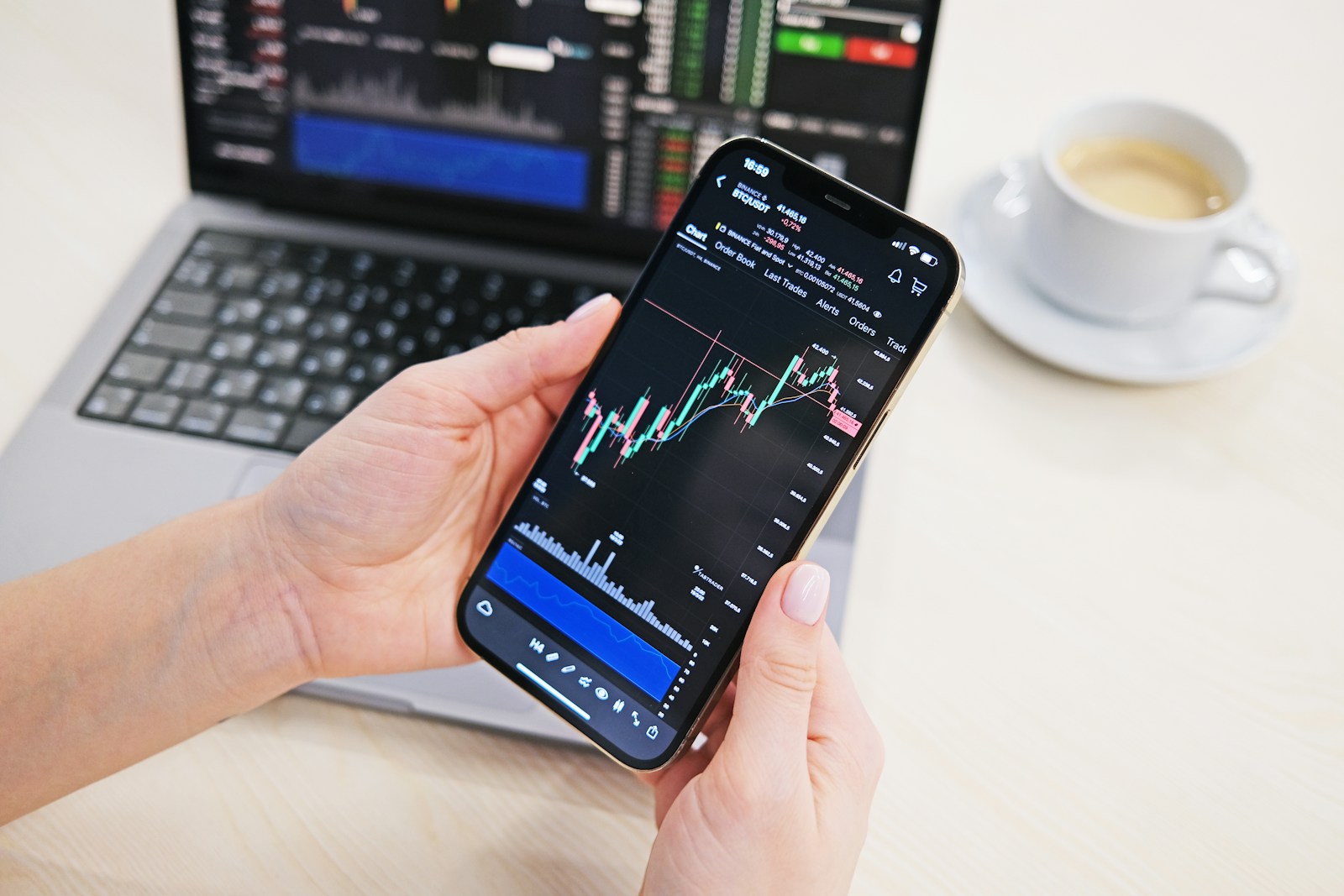
Mastering price movements begins with recognizing key formations and interpreting signals accurately. Identifying reliable patterns such as head and shoulders, flags, or double bottoms provides concrete entry and exit points. For example, the bearish engulfing pattern often precedes a sharp decline in asset value, offering traders a chance to minimize losses or initiate short positions effectively.
Utilizing diverse technical tools sharpens decision-making during trading sessions. Moving averages, RSI, and MACD indicators deliver complementary insights about momentum and trend strength. Recent volatility spikes in equity markets highlight how combining volume-based oscillators with support-resistance zones can enhance timing precision. Have you noticed how divergence between price action and oscillator readings frequently signals reversals?
Chart interpretation demands contextual awareness–understanding the interplay between historical data and current market sentiment is vital. In Q1 2024, cryptocurrency pairs illustrated this well: despite bullish patterns on weekly graphs, underlying volume contractions warned of impending pullbacks. This juxtaposition underscores why relying solely on one indicator risks misjudging potential moves.
Integrating multiple signal types reduces false positives significantly. For instance, confirming a breakout via increased volume alongside stochastic crossovers increases confidence exponentially compared to isolated indicators. Such layered analysis differentiates seasoned traders from novices by transforming raw data into actionable intelligence.
Mastering market charts for advanced trading and investment decisions
Successful interpretation of market graphs relies heavily on understanding price movements and recognizing recurring formations. Identifying reliable configurations such as head-and-shoulders, double tops, or flags offers actionable insights into potential trend reversals or continuations. For instance, the 2017 Bitcoin rally featured a classic ascending triangle pattern that preceded a strong bullish breakout, underscoring the importance of pattern recognition in forecasting momentum shifts.
Beyond formations, evaluating price fluctuations through momentum indicators like RSI (Relative Strength Index) or MACD (Moving Average Convergence Divergence) enhances timing accuracy. These tools provide quantitative signals about overbought or oversold conditions, helping traders avoid premature entries or exits. For example, during Ethereum’s correction phase in early 2023, RSI values dipping below 30 coincided with short-term bottoms, signaling optimal buying opportunities confirmed by bullish divergence patterns.
Volume analysis remains an indispensable component when verifying the validity of observed shapes and trends. Price action accompanied by increasing trade volume typically confirms strength behind a movement, whereas declining volumes during breakouts may indicate false signals. A notable case was Litecoin’s 2021 surge where rising volumes supported its channel breakout, validating entry points suggested by moving average crossovers.
Combining multiple oscillators and moving averages can generate composite signals that reduce noise from isolated indicators. The synergy between stochastic oscillators and exponential moving averages often filters out misleading data inherent to volatile assets like altcoins. Traders have successfully applied this approach to Ripple’s XRP during periods of consolidation to predict breakout directions before significant price surges occurred.
Understanding context is equally important: broader market sentiment and macroeconomic factors influence chart behavior significantly. Technical cues must be weighed alongside news events such as regulatory announcements or network upgrades that impact asset valuation abruptly. For example, the sudden spike in Binance Coin prices following regulatory clarifications in late 2023 demonstrated how external catalysts can amplify indicator signals already hinting at upward momentum.
Finally, disciplined risk management embedded within graphical evaluation ensures sustainable profitability. Setting stop-loss orders based on support and resistance levels derived from price patterns preserves capital against unexpected volatility spikes common in cryptocurrency markets. Case studies consistently show that traders who integrate signal confirmation with prudent exit strategies outperform those relying solely on single-method interpretations without regard for market unpredictability.
Identifying Key Candlestick Patterns
Recognizing significant candlestick configurations is fundamental for interpreting price dynamics accurately. Patterns such as the Doji, Hammer, and Engulfing provide clear signals about potential trend reversals or continuations, helping traders anticipate market movements with greater confidence. For instance, a Hammer pattern appearing after a sustained downtrend often indicates a possible bullish reversal, which can be corroborated by volume indicators for enhanced reliability.
Integrating these formations into your examination of price fluctuations improves decision-making. The Morning Star pattern, characterized by a small-bodied candle between a bearish and subsequent bullish candle, exemplifies bullish sentiment shift. In recent Bitcoin trading sessions during low liquidity periods, this pattern successfully predicted upward moves exceeding 5% within hours, demonstrating its practical application beyond theory.
Common Candlestick Patterns and Their Implications
Bullish Engulfing occurs when a small red candle is followed by a larger green candle that fully covers the previous body. This sequence suggests increased buying pressure and potential upward momentum. Technical data from Ethereum’s charts in Q1 2024 showed this pattern preceding rallies averaging 8%, especially when combined with rising RSI values above 50.
Shooting Star signals bearish reversal despite an initial price surge within the period. It features a small real body near the lower end and a long upper wick indicating rejection at higher levels. When observed alongside declining MACD histogram bars after an uptrend–as seen in Litecoin’s market behavior in March 2024–it often marks imminent sell-offs or corrections.
The Harami pattern presents two candles where the second’s body is contained within the first’s range, signaling indecision or weakening momentum. Analyzing Ripple’s recent market data revealed Harami formations occurring prior to sideways consolidation phases lasting up to three days, confirming their role as neutral indicators pending further confirmation from volume trends or moving averages.
A nuanced approach involves cross-referencing these patterns with oscillators like Stochastic RSI or Bollinger Bands to filter false positives effectively. For example, a Bearish Engulfing pattern accompanied by Stochastic RSI entering overbought territory strengthens the likelihood of an impending downturn rather than mere short-term volatility. Such multi-layered evaluation reduces risk exposure and enhances precision in timing entries or exits.
Candlestick patterns represent just one facet among numerous indicators available for comprehensive price assessment. Nevertheless, mastering their identification sharpens intuition about market psychology embedded in graphical representations of supply-demand balance. Observing how these shapes evolve under varying volumes and timeframes equips traders to adapt strategies dynamically amid fluctuating conditions witnessed recently across major cryptocurrencies like Bitcoin, Ethereum, and Binance Coin.
Using moving averages correctly
To utilize moving averages effectively, focus on the crossover of different period averages as reliable signals for potential action. For instance, a common approach is to monitor the 50-day and 200-day moving averages; when the shorter-term average crosses above the longer one–a pattern often termed a “golden cross”–it typically indicates bullish momentum. Conversely, a “death cross,” where the 50-day moves below the 200-day, may signal bearish conditions. Such crossovers provide clear triggers for initiating or closing positions within trading systems that rely heavily on trend-following indicators.
However, moving averages must not be treated in isolation. They function best when combined with volume analysis and other momentum indicators like RSI or MACD to confirm patterns and filter out false signals. For example, during sideways price movement, moving averages tend to generate whipsaws–frequent but unreliable signals–that can lead to premature trades. Integrating multiple data points enhances confidence in trade decisions and reduces exposure to market noise, especially in volatile cryptocurrency markets where price fluctuations often exceed traditional asset volatility metrics.
Recent case studies reveal how moving average strategies perform under varying conditions. In early 2024, Bitcoin exhibited strong upward trends validated by consistent support at its 100-day exponential moving average (EMA), which traders used as dynamic entry zones. Meanwhile, Ethereum’s price frequently tested its 20-day simple moving average (SMA) during periods of consolidation before breaking out decisively. These examples demonstrate that selecting appropriate time frames aligned with specific market phases–shorter EMAs for fast-moving assets and longer SMAs for stability–improves signal accuracy and timing precision.
What about adapting moving average parameters amid changing market regimes? Dynamic adjustment based on volatility measures such as Average True Range (ATR) can optimize indicator responsiveness. In practice, increasing SMA length during high volatility reduces false breakouts, while shortening it in trending environments captures momentum earlier. This adaptive approach underscores the importance of contextual awareness when interpreting indicator signals rather than rigid adherence to fixed periods. Ultimately, effective use of these tools relies on continuous pattern recognition supported by quantitative validation rather than guesswork or overreliance on historical norms.
Drawing Support and Resistance Levels
Accurate identification of support and resistance levels hinges on observing the price action where repeated reversals or consolidations occur. These horizontal or slightly angled lines mark zones where buyers or sellers consistently enter the market, creating psychological barriers for further movement. For example, Bitcoin’s $30,000 level has acted as a strong support multiple times in recent months, reflecting collective trader behavior that prevents prices from dropping below this threshold.
To plot these key levels effectively, one must analyze historical data points where price has stalled or reversed noticeably. Using candlestick patterns alongside volume spikes enhances reliability by confirming whether a breakout through these lines holds significance or is prone to failure. Additionally, incorporating oscillators such as RSI can reveal if an asset approaches oversold conditions near support zones, adding weight to potential bounce signals.
Identifying Zones Rather Than Exact Lines
Support and resistance are better viewed as zones rather than precise lines because market participants rarely react at an exact price point. Price often fluctuates within a range around these levels before either breaking through or reversing. This phenomenon is evident in Ethereum’s trading between $1,800 and $1,850 over several weeks during mid-2023, which formed a robust resistance zone confirmed by repeated failed attempts to close above it.
Recognizing this concept helps avoid false breakouts that occur when prices momentarily pierce a level but fail to maintain momentum. Combining moving averages with volume analysis can identify whether such moves reflect genuine shifts in supply-demand dynamics or are temporary anomalies caused by low liquidity periods.
Using Multiple Timeframes for Confirmation
Cross-referencing support and resistance across different timeframes strengthens their validity. A daily chart may show significant support near $40,000 for Bitcoin, while the weekly chart confirms it as part of a larger accumulation phase spanning several months. The convergence of signals from various intervals offers a more comprehensive perspective on market sentiment and reduces the risk of relying on misleading short-term fluctuations.
This multi-layered approach also aids in planning entry and exit points with greater precision. For instance, intraday traders might use hourly charts to detect immediate pressure points while aligning trades with daily or weekly zones to ensure alignment with broader trends observed in order book depth and macroeconomic indicators.
Integrating Technical Patterns and Indicators
Patterns like double bottoms or head-and-shoulders formations often coincide with established support and resistance levels, reinforcing their importance. When price tests these areas repeatedly without breaching them decisively, it generates clearer signals about potential trend reversals or continuations. Volume surges accompanying such tests serve as additional confirmation confirming trader conviction behind moves.
Indicators such as Bollinger Bands can delineate volatility boundaries around these levels while Fibonacci retracements assist in identifying intermediate supports within broader swings. For example, Litecoin’s rally correction in early 2024 respected both its 0.618 Fibonacci retracement level near $120 and previous resistance turned support at roughly $115–an interplay illustrating layered technical factors guiding price behavior.
The Role of Psychological Price Points
Certain round numbers tend to act as magnet-like barriers due to trader psychology; these are often self-fulfilling prophecies shaped by mass participation at commonly watched figures like $50,000 for Bitcoin or $2,000 for Ethereum. These thresholds accumulate orders from stop-losses and take-profits that cluster around them, intensifying their role as critical battlegrounds between bulls and bears.
This effect is amplified during heightened volatility phases when algorithmic trading systems trigger cascades around these values based on programmed rules tied directly to identified support/resistance levels combined with momentum indicators like MACD crossovers–highlighting the interconnectedness between human behavior and automated strategies shaping market dynamics.
Adapting Levels Amid Changing Market Conditions
Support and resistance are not static; they evolve as new data emerges from ongoing price movements influenced by macroeconomic events or sector-specific developments such as regulatory announcements impacting blockchain projects. Traders must continuously update their levels using fresh input from real-time order flow analytics and pattern evolution rather than relying solely on outdated reference points.
- A sudden surge in institutional buying might shift prior resistance into new support swiftly.
- A breakdown triggered by negative news can invalidate former supports rapidly causing retests lower down the scale.
- Divergence between price action and momentum indicators often hints at weakening strength near traditional zones requiring recalibration of strategy.
This dynamic adjustment process ensures alignment with current market structure rather than static assumptions–a practice demonstrated effectively during recent altcoin corrections where previously solid supports dissolved under shifting liquidity conditions visible through depth-of-market tools combined with volume profile analysis.
Interpreting Volume for Trends
Volume serves as a key gauge of market participation and momentum, providing critical confirmation for price movements. Rising volume alongside an uptrend typically validates strength in buying interest, while declining volume during price advances may signal weakening conviction. Conversely, increased volume during a downtrend often indicates accelerating selling pressure. Traders frequently monitor volume spikes to identify potential breakouts or reversals within established patterns such as triangles or head-and-shoulders formations.
Incorporating volume-based indicators enhances the precision of trend assessment and trading decisions. Tools like On-Balance Volume (OBV) and Volume Weighted Average Price (VWAP) quantify the relationship between price action and traded volumes, assisting in distinguishing genuine moves from false signals. For example, OBV divergence–where price makes new highs but OBV fails to follow–can presage trend exhaustion. Such insights are invaluable when evaluating consolidation phases preceding strong directional shifts.
Case studies reveal how volume dynamics underpin successful market timing strategies. During the 2023 cryptocurrency rally, Bitcoin exhibited sharp volume surges coinciding with key resistance breakouts near $30,000. These bursts aligned with significant price acceleration confirmed by relative strength index (RSI) trends exceeding 70. In contrast, Ethereum’s sideways movement through Q1 2024 showed diminishing daily volumes below 50% average levels, indicating reduced trader engagement and limited breakout potential despite minor price fluctuations.
Volume should always be interpreted contextually within the broader framework of pattern recognition and indicator interplay. For instance, a bullish flag pattern accompanied by above-average volume on the breakout candle suggests sustainable upward continuation. However, if similar breakouts occur on subdued volumes, caution is warranted due to elevated risk of retracement. Additionally, intraday charts with high-frequency data can expose accumulation or distribution phases before large-scale moves manifest on higher timeframes.
Integrating volume analysis with other technical metrics optimizes risk management and entry timing. Combining moving average convergence divergence (MACD) crossovers with confirming volume increases reduces false positives that often plague isolated signals. Moreover, understanding how different exchanges report volume aids in filtering noise; wash trading can inflate figures misleadingly. Consequently, rigorous scrutiny of genuine liquidity flows remains imperative for reliable evaluation of emerging trends and strategic positioning within volatile markets.
Applying RSI for Entry Points: Strategic Insights and Future Directions
Leveraging the Relative Strength Index (RSI) as a signal generator enhances precision in pinpointing optimal price entry levels within volatile markets. When RSI dips below 30, it frequently indicates oversold conditions, offering potential buying opportunities; conversely, readings above 70 often highlight overbought zones where caution is warranted. Integrating these signals with volume trends and candlestick formations refines decision-making, reducing false positives in trade execution.
For instance, during Bitcoin’s sharp pullback in mid-2023, RSI values approaching 28 coincided with strong support around $25,000, confirmed by bullish engulfing patterns on hourly plots–demonstrating how multi-indicator confirmation strengthens conviction. However, reliance solely on RSI without contextualizing broader momentum or divergence patterns risks premature entries. Traders should monitor divergences where price makes new lows but RSI fails to follow suit, signaling potential reversals that traditional trend-following metrics might miss.
Broader Implications and Evolving Methodologies
As decentralized finance matures and algorithmic trading gains dominance, the interplay between oscillators like RSI and emerging machine learning-driven indicators will reshape analytical frameworks. Real-time adaptability of such tools to shifting liquidity profiles across exchanges challenges static threshold paradigms (e.g., fixed 30/70 levels), prompting adaptive models that recalibrate sensitivity based on volatility regimes.
The fusion of pattern recognition algorithms with classical momentum indicators could automate identification of entry points with higher statistical significance. Moreover, combining RSI-derived signals with order book dynamics offers granular insights into supply-demand imbalances preceding major moves. This convergence expands beyond isolated indicator readings toward holistic synthesis of price behavior captured through multidimensional datasets.
- Signal refinement: Incorporating RSI divergences alongside moving averages can filter out noise inherent in short-term fluctuations.
- Dynamic thresholds: Adjusting overbought/oversold bands relative to asset-specific volatility metrics improves responsiveness under diverse market conditions.
- Cross-market validation: Comparing RSI signals across correlated assets enhances robustness by contextualizing localized anomalies versus systemic shifts.
Ultimately, mastering the application of momentum indicators like RSI demands continuous calibration against evolving patterns embedded within price evolution and volume flows. The path forward lies in blending quantitative rigor with nuanced interpretation to unlock superior trading edge amid increasingly complex market environments.








